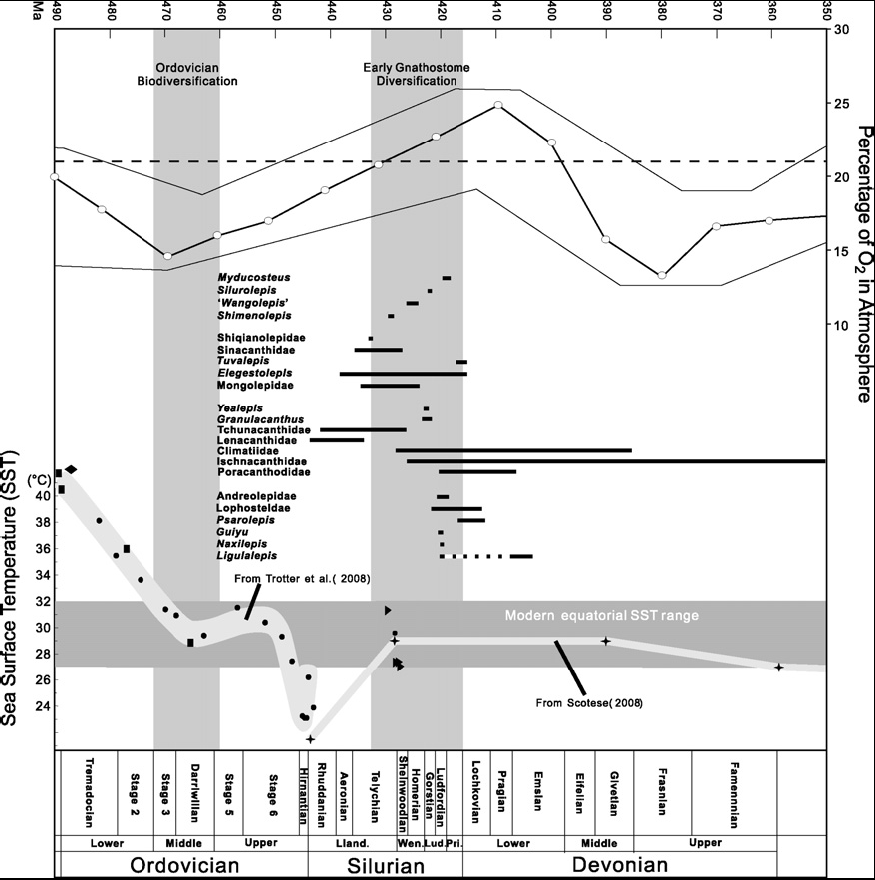(The temperature curve and atmospheric O2 concentrations from Ordovician to Devonian, with stratigraphic ranges of main gnathostome taxa. Courtesy of Qu et al.)
Compared with other periods of the Palaeozoic, the Silurian is shorter and comprises less than one tenth of the era, but it is a critical period for the evolution of life on the Earth. Despite the earliest record of gnathostomes (jawed vertebrates) possibly extending to the Late Ordovician, Silurian gnathostome remains have been few and fragmentary for a long time. However, recent decades have seen a growth of fossil evidence of gnathostomes in the Silurian, which is improving our understanding of early gnathostome distribution and evolution. Primitive gnathostome remains from the Silurian of China are of special interest in bridging morphological gaps between osteichthyans and non-osteichthyan gnathostome groups. These data suggest an early radiation pattern of Silurian gnathostomes.
Q. M. Qu, a graduate student of IVPP (Institute of Vertebrate Paleontology and Paleoanthropology, Chinese Academy of Sciences), with Drs. M. Zhu and W. J. Zhao, reviewed these early fishes from Laurentia,West Avalonia, East Avalonia, Baltica, Siberia, Pan-Cathaysian landmass group, Indochina, and East Gondwana, which shows that gnathostomes had already obtained a wide distribution and experienced an early radiation in the Middle-Late Silurian.
Environmental conditions in the Silurian are inferred from recent advances in geochemistry and paleoclimate models. Atmospheric oxygen concentration, an environmental factor critical in organismal evolution, rose gradually during the Silurian and reached modern levels for the first time. Compared to the Middle Ordovician when invertebrates and agnathans underwent a great radiation, the Middle-Late Silurian is distinctive for its high atmospheric oxygen level. "The rise of the atmospheric oxygen concentration would have triggered the early radiation of jawed vertebrates in the Silurian, which paved the way for the high generic diversity of vertebrates in the Devonian", said Qu.
(The original paper was published in Issues 1-2, Palaeoworld, 2010)
